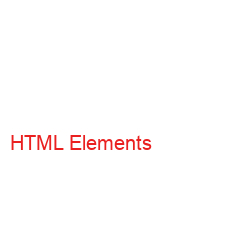HTML Elements: Basic Examples
HTML, or HyperText Markup Language, is the standard language for creating and designing websites. At the heart of HTML are HTML elements, which are used to create the structure and content of a webpage. In this post, we will go over some of the most basic HTML elements and provide examples of how to use them.
Headings
Headings are used to structure the content of a webpage and indicate the hierarchy of information. There are six levels of headings, from
to
, with
being the most important and
being the least important. Here’s an example:
This is a Heading 1
This is a Heading 2
This is a Heading 3
This is a Heading 4
This is a Heading 5
This is a Heading 6
being the most important and
being the least important. Here’s an example:
This is a Heading 1
This is a Heading 2
This is a Heading 3
This is a Heading 4
This is a Heading 5
This is a Heading 6
This is a Heading 1
This is a Heading 2
This is a Heading 3
This is a Heading 4
This is a Heading 5
This is a Heading 6
Paragraphs
Paragraphs are used to organize and format the text on a webpage. They are created using the
element. Here’s an example:
This is a paragraph of text.
Links
Links allow users to navigate from one webpage to another. They are created using the element and require a URL or a file path as an attribute. Here’s an example:
This is a link to an external website.
This is a link to a file on the same website.
Images
Images can be added to a webpage using the element. The source of the image is specified using the “src” attribute. Here’s an example:

Lists
Lists are used to organize and format items in a list. There are two types of lists in HTML: ordered lists and unordered lists. Ordered lists are created using the
- element, while unordered lists are created using the
- First item
- Second item
- Third item
- First item
- Second item
- Third item
- element. Here’s an example:
Tables
Tables are used to organize and display data in a structured manner. They are created using the
element). Here’s an example:
In conclusion, these are just a few of the many HTML elements that are available for use. Understanding and mastering the use of these elements is essential for creating functional and well-designed websites. With practice, you will be able to create complex and dynamic webpages that effectively communicate your message to your audience.
MORE STORIES
|












